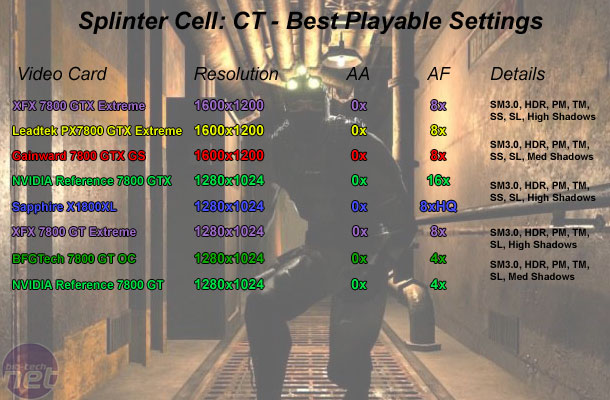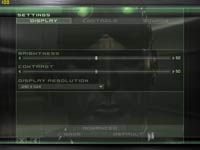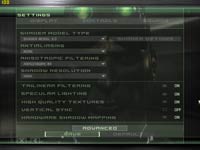7800 GTX Extreme Edition Head-to-Head
October 20, 2005 | 11:04

Splinter Cell: Chaos Theory
Publisher: UbisoftWe used the full version of Splinter Cell: Chaos Theory patched to version 1.04. It features a new game engine that has been created around a heavily modified Unreal Engine 2. The game used to only have two shader profiles: Shader Model 1.1 and Shader Model 3.0. All of ATI's current video cards default to Shader Model 1.1, and only the GeForce 6 series is capable of using the Shader Model 3.0 path.
However, the introduction of patch 1.04 bought a Shader Model 2.0 profile for ATI's current generation video cards. You can read more about the Shader Model 2.0 path here.
We configured both Anti-Aliasing and Anisotropic Filtering from within the game, and thus the driver control panel was left set to "Application Controlled".
Below is a table of the best-playable settings that we found best for each video card configuration. In this title, we found that 20 to 25 frames per second minimum and a target of 45 frames per second (or higher) for the average frame rate delivered a smooth and fluid gaming experience across the rest of the game. The title is quite slow paced, so we can afford to lower the threshold on what we determine to be playable.
Key:
- SM1.1 - Shader Model 1.1 path;
- SM2.0 - Shader Model 2.0 path;
- SM3.0 - Shader Model 3.0 path;
- SL - Specular Lighting;
- PM - Parallax Mapping;
- SS - Soft Shadows;
- HDR - High Dynamic Range Lighting;
- TM - Tone Mapping

We found that both the XFX and Leadtek 7800 GTX Extreme Editions were capable of delivering the same highest playable settings. Unlike most of the other titles that we've tested, we found that there was very little difference in performance and smoothness between the two Extreme Editions. Both video cards delivered a minimum frame rate of 21 frames per second, while there was a single frame per second to separate their average frame rates. As you would expect from the frame rates reported, we were unable to see any benefits in playability for this title as a result of the additional memory bandwidth that the XFX Extreme Gamer Edition has.
The reference clocked GeForce 7800 GTX was not fast enough to play the game at 1600x1200 without disabling some of the shader model 3.0 features. As a result of this, we found that the game looked better at 1280x1024 0xAA 16xAF with everything turned on, than it did with both soft shadows and parallax mapping disabled at 1600x1200. Subjectively, NVIDIA's 16xAF is only slightly better than 8x High Quality Anisotropic Filtering on the Sapphire Radeon X1800XL.

MSI MPG Velox 100R Chassis Review
October 14 2021 | 15:04







Want to comment? Please log in.